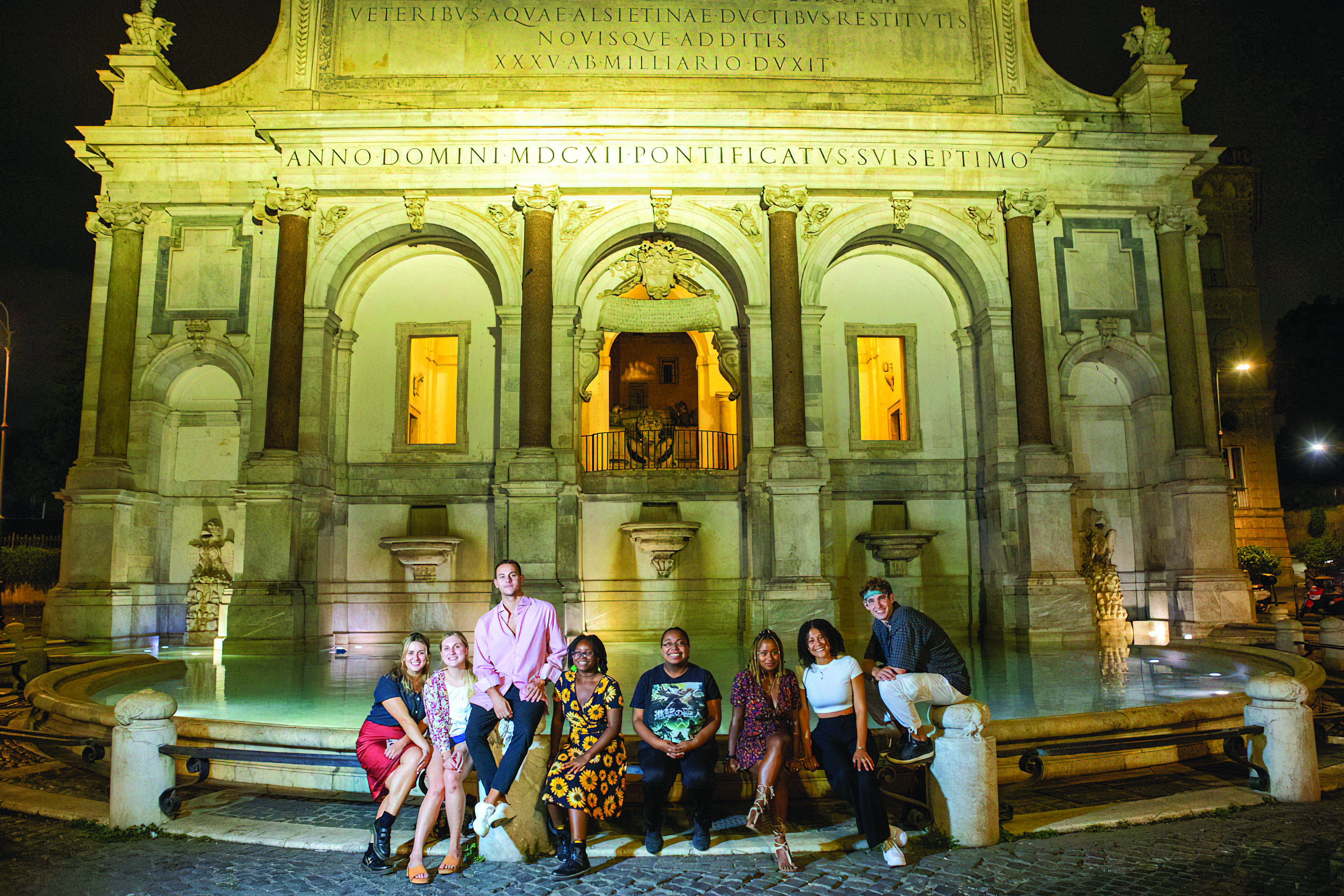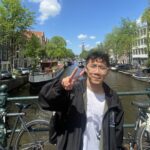Since its founding in 1969, the American University of Rome has been providing a liberal arts education with a difference – it offers an abundance of opportunities to learn beyond the classroom. The oldest American degree-granting institution in Rome, Italy, the university emphasizes exploring the historical city of Rome and encourages its students to participate in academic field trips to broaden their understanding of the real world instead of just reading facts from a textbook in class. This is done as early as during the first year of studying here.
The thematic First Year program includes the compulsory “Explorations in the Liberal Arts” course that acts as an introductory subject for students to ease themselves into the university’s learning environment and start building lasting friendships. Recently, to dig deeper into this year’s theme on migration, First Year students spent a day touring the neighborhood of Tor Pignattara and visiting places like Ecomuseo Casilino, the Mausoleum and Catacombs of Saint Helena, and the Migrant Museum in Casa Scalabrini. During the excursion, they discussed both national and international migration trends and how street art is being used as a way for migrants to reclaim a space in the city and change how the public views them.
The university currently offers 10 bachelor’s degrees and three master’s degrees, all taught in English. These degrees include field trips to various locations in and out of the country. For example, past Bachelor Degree in Travel and Tourism Management students have travelled to the Italian province of South Tyrol to study the local culture from a historical, gastronomic, sustainable, and local standpoint.

The 14:1 student-to-faculty ratio allows for more in-depth discussions. Source: American University of Rome
That same semester, students also went to Kraków, Poland to meet with the city’s Department of Tourism and the Department of Culture and National Heritage. Their trip resulted in valuable insights into sustainable cultural heritage tourism marketing strategies that can be applied to their future professional careers.
“One of the advantages of going on academic field trips is the opportunity to do things you usually wouldn’t have done as a tourist,” says student Aurora Till. “We were given two separate presentations by two city departments. First is the Department of Tourism, followed by a meeting with the Department of Culture and National Heritage. As someone who aspires to work in the tourism sector after graduating, I appreciated listening to their input.”
For students of the Bachelor Degree in International Relations and Global Politics program, they had the opportunity to visit the Italian headquarters of the United Nations High Commissioner for Refugees (UNCHR). There, they engaged with Enrico Guida, Protection Associate at UNCHR to discuss the real-world application of international humanitarian law and principles of humanitarian values. The student-led conversation focused on the concept and realities of stateless people, a topic that they had been diving into in recent classes.
No matter which program you choose, you will have just as many experiential opportunities through academic field trips, internships with national and international commercial companies and NGOs, and more. In fact, the entire city of Rome is your classroom.

Rome is your classroom, as courses are focused more on experiential learning in and out of the city. Source: American University of Rome
“It was fascinating to observe how the concepts we learn in class are put into practice through the efforts of the organization that works to assist individuals in their quest for a better quality of life and in their quest to adapt and fully integrate into a new society without being considered as outsiders,” student Isabella Desinno says. “Witnessing how the theories and concepts we have learned in class are used in real-life situations can be an eye-opening experience that allows us to see its practical application in the world around us.”
With a student-faculty ratio of 14:1, classes are intimate and focused. This allows for in-depth discussions with professors and peers who come from all over the world. With an internationally diverse student body, students and faculty members can draw from different points of view, ideas, and real-world experiences, enriching the debates and dialogues within and beyond the classroom.
“It has been an amazing experience growing and learning at The American University of Rome. The professors are impressive and have imparted fantastic advice,” graduate Tanya O’Malley says. “AUR has given me much more than just a place to learn, but also a home.”
Follow The American University of Rome on Facebook, Instagram, LinkedIn, X, and YouTube.










